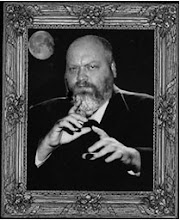Did the Vikings drive natives from the isles?
by STEPHEN STEWART
May 17 2005
VIKING settlers may have "ethnically cleansed" Scotland's islands, waging a genocidal campaign against native Pictish tribes as they arrived, according to evidence uncovered by archaeologists.
Excavations on Orkney could finally settle a centuries-old historical debate over whether the Norsemen integrated with indigenous locals or slaughtered them at the dawn of the last millennium. Work at Langskaill farm, in Westray, shows signs of a Pictish culture vanish abruptly with the arrival of the Scandinavians, underlining the theory that the Northern Isles were taken violently. The dig uncovered remains dating from the early Iron Age through to the fourteenth century, with the pre-Norse evidence disappearing suddenly as the settlers arrived in larger numbers. A Viking-Norse longhouse was unearthed, which was built directly over an earlier earth house and part of a Pictish house, probably indicating a takeover of the site and adjoining lands. Olwyn Owen, a senior inspector of ancient monuments with Historic Scotland, which was one of the excavation's sponsors, said: "This site shows a very clear change of material culture but it doesn't show what actually happened to the Picts. That is very difficult to prove."
In recent years, the image of the Vikings has been transformed from bloodthirsty pagan savages to that of sophisticated merchants with exceptional navigational and engineering skills. The finds on Orkney, however, are expected to reopen the entire debate. Brian Smith, an archivist at Shetland Islands Council, said the new evidence was a further hint of some sort of displacement of the native population. He said: "(Langskaill) lends a local dimension to the idea that there was strife. " All that the archaeologists (in favour of the integration theory) have to argue is the fact that some Pictish detritus has been found in Norse archaeological levels, and that there is a stone in Bressay in Shetland that some think contains Norse and Celtic words. "In the first case, co-existence is of course not the only explanation. In the second, doubt has been expressed by the experts about the alleged linguistic material on the Bressay stone, and there is no way of getting a precise date for it."
Ms Owen said archaeology may be unable to provide a complete picture of the process of Viking settlement. She said: "There is a danger that the argument becomes too simplistic with one group arguing the Vikings slaughtered in order to take the island over and the other maintaining they started living peacefully. It may not be that simple."
The finds inside the earth house related to the two main periods of use. The Iron Age remains comprised mainly of soil deposits, but there were also a number of pieces of whale bone and stone tools.The later Viking-Norse period deposits included midden, made up of shells, fishbones, fragments of soapstone vessels and human coprolites or fossilised excrement.
May 17 2005
VIKING settlers may have "ethnically cleansed" Scotland's islands, waging a genocidal campaign against native Pictish tribes as they arrived, according to evidence uncovered by archaeologists.
Excavations on Orkney could finally settle a centuries-old historical debate over whether the Norsemen integrated with indigenous locals or slaughtered them at the dawn of the last millennium. Work at Langskaill farm, in Westray, shows signs of a Pictish culture vanish abruptly with the arrival of the Scandinavians, underlining the theory that the Northern Isles were taken violently. The dig uncovered remains dating from the early Iron Age through to the fourteenth century, with the pre-Norse evidence disappearing suddenly as the settlers arrived in larger numbers. A Viking-Norse longhouse was unearthed, which was built directly over an earlier earth house and part of a Pictish house, probably indicating a takeover of the site and adjoining lands. Olwyn Owen, a senior inspector of ancient monuments with Historic Scotland, which was one of the excavation's sponsors, said: "This site shows a very clear change of material culture but it doesn't show what actually happened to the Picts. That is very difficult to prove."
In recent years, the image of the Vikings has been transformed from bloodthirsty pagan savages to that of sophisticated merchants with exceptional navigational and engineering skills. The finds on Orkney, however, are expected to reopen the entire debate. Brian Smith, an archivist at Shetland Islands Council, said the new evidence was a further hint of some sort of displacement of the native population. He said: "(Langskaill) lends a local dimension to the idea that there was strife. " All that the archaeologists (in favour of the integration theory) have to argue is the fact that some Pictish detritus has been found in Norse archaeological levels, and that there is a stone in Bressay in Shetland that some think contains Norse and Celtic words. "In the first case, co-existence is of course not the only explanation. In the second, doubt has been expressed by the experts about the alleged linguistic material on the Bressay stone, and there is no way of getting a precise date for it."
Ms Owen said archaeology may be unable to provide a complete picture of the process of Viking settlement. She said: "There is a danger that the argument becomes too simplistic with one group arguing the Vikings slaughtered in order to take the island over and the other maintaining they started living peacefully. It may not be that simple."
The finds inside the earth house related to the two main periods of use. The Iron Age remains comprised mainly of soil deposits, but there were also a number of pieces of whale bone and stone tools.The later Viking-Norse period deposits included midden, made up of shells, fishbones, fragments of soapstone vessels and human coprolites or fossilised excrement.


0 Comments:
Post a Comment
<< Home